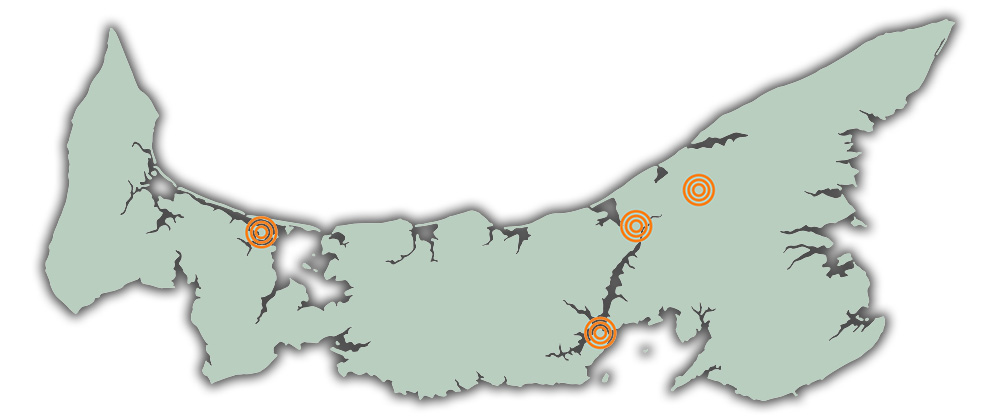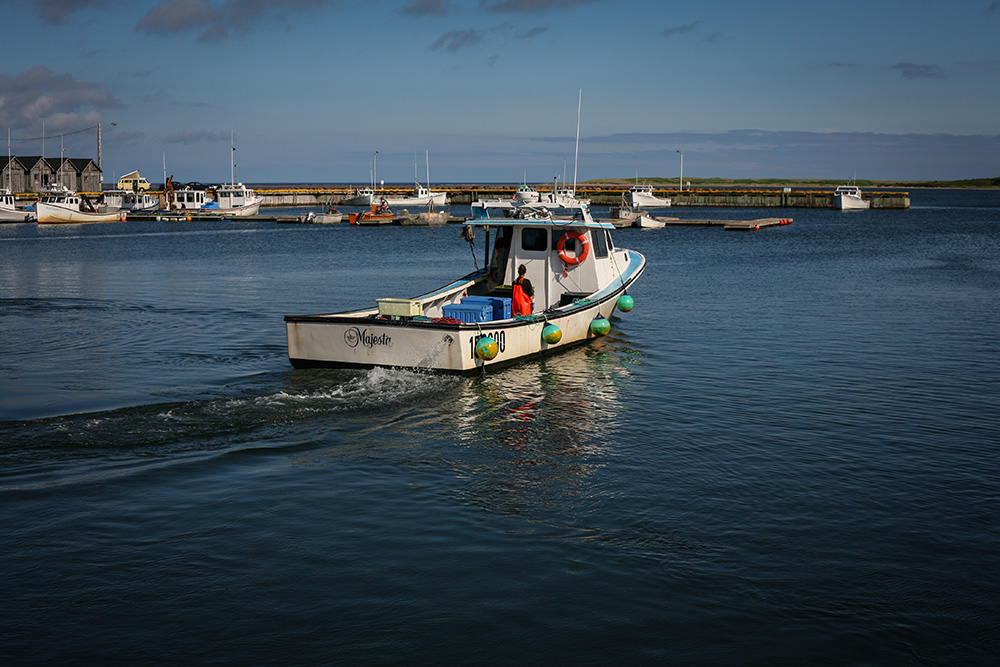Steady growth within the fishing community spawns employment, infrastructure, and commercial development
In under two decades Lennox Island and Abegweit First Nations have created a multi-million dollar fishery supporting more than a hundred jobs. As with most PEI fishing communities, lobster is the linchpin. The lobster fishery alone, with two or more persons per boat, provides about a hundred jobs during the season. The two First Nations also fish crab, tuna, mackerel, silversides, softshell clams, and oysters, with more species to come.
It was 1999 when the Supreme Court of Canada affirmed that historic treaties justified commercial fishing rights in the Maritimes. The federal government made boats and licences available, but the communities still faced a major challenge. In a complex, fast-paced, often difficult industry, they were starting from scratch with no experience.
A major training effort, assisted by the federal Department of Fisheries and Oceans (DFO), provided a corps of able captains and crews that helped train Native personnel under a mentorship program. Today, every one of the 26 Lennox Island and 8 Abegweit boats has a Native captain and crew. And they are competing well with the non-Native captains who, in some instances, assisted in training.
Lennox Island First Nation has its own wharf and a new fisheries building. The community has also bought a nearby processing plant. Currently leased out, the facility will eventually process oysters from the band’s own operation. In another move, the band took over the historic oyster-research station at Ellerslie. This will serve for aquaculture projects now being looked at and could also attract bioscience clients to share the space.

Today, every one of the 26 Lennox Island and 8 Abegweit boats has a Native captain and crew.
Another spinoff occurred on the organizational side. Fishery growth helped prompt the 2002 creation of the Mi’kmaq Confederacy of Prince Edward Island (MCPEI) and that agency has in turn aided fishery planning and development. The organization is developing a code of best business practices, supported by DFO’s Atlantic Integrated Commercial Fishery Initiative (AICFI). MCPEI also helps in such matters as human-resource planning and strengthening the two First Nations’ collective voice.
The fishery has brought new vibrancy to the community. Besides employing the captains and crew members, it creates on-shore jobs such as maintaining vessels and gear, weighing out catches, and managing the administrative and business components.
For data storage and business planning, the Atlantic Policy Congress of First Nations Chiefs has developed a new software package. The Fisheries Management System keeps track of such matters as catches, areas, prices, costs, revenues, and fishery personnel and their degree of training. It promises greater efficiency in streamlining operations and spotting opportunities.
Modern technology also lets shore personnel monitor vessels. The Abegweit Fishery Co-ordinator, keeps track of the fleet through an electronic monitoring system that can pinpoint the location of any vessel at any time. Lennox Island has made a bold move forward with the construction of a lobster processing plant, which will buy and market First Nation lobster, employ First Nation community members, and provides a valuable revenue generator for the Band.
The fishery is never simple and will always have its challenges. A rising dollar could reduce business margins and lobster catches will probably stay weak in some areas. Overall, however, the Native fishery is coming into its own and that’s good for the Island at large.

